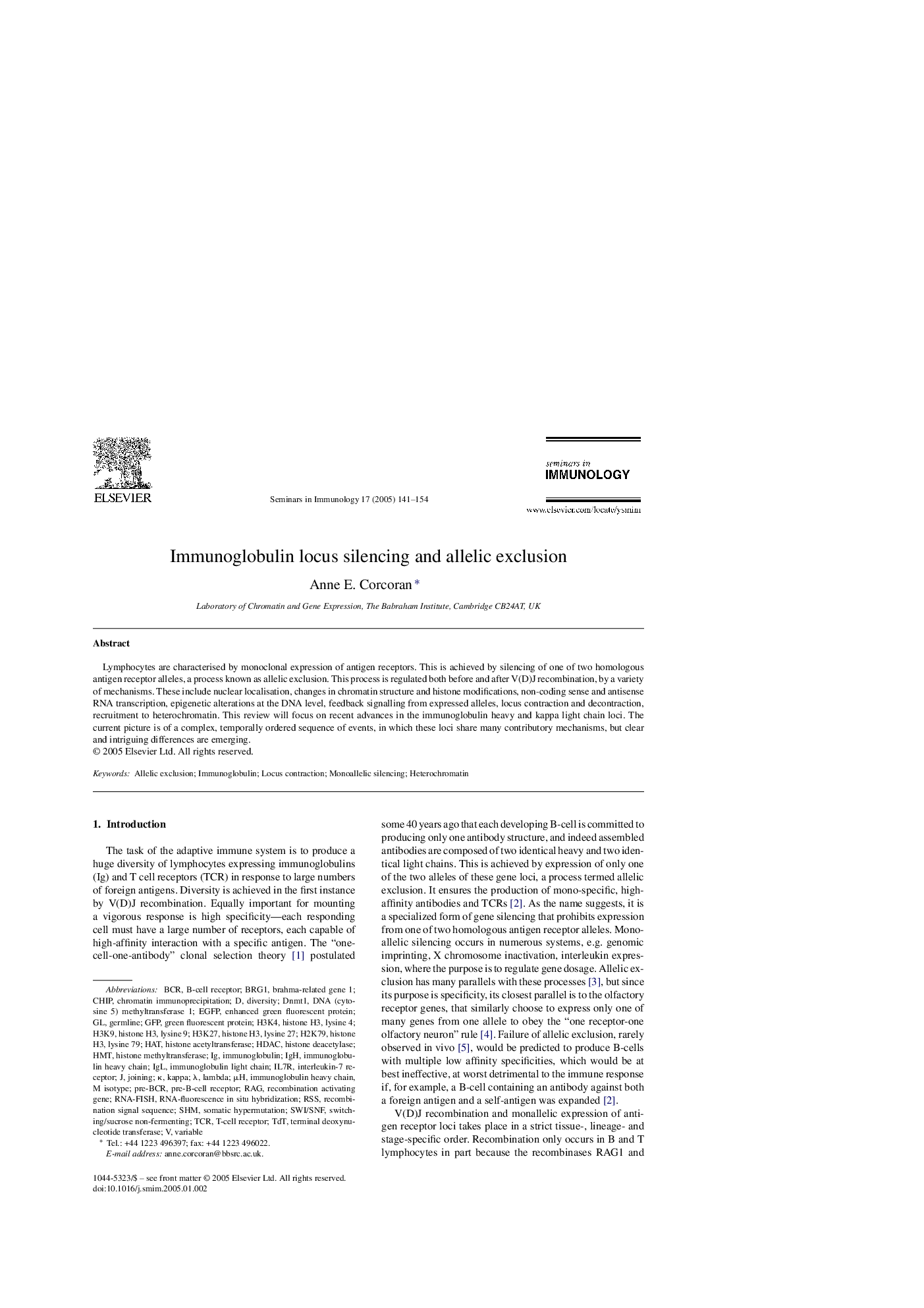| Article ID | Journal | Published Year | Pages | File Type |
|---|---|---|---|---|
| 9273574 | Seminars in Immunology | 2005 | 14 Pages |
Abstract
Lymphocytes are characterised by monoclonal expression of antigen receptors. This is achieved by silencing of one of two homologous antigen receptor alleles, a process known as allelic exclusion. This process is regulated both before and after V(D)J recombination, by a variety of mechanisms. These include nuclear localisation, changes in chromatin structure and histone modifications, non-coding sense and antisense RNA transcription, epigenetic alterations at the DNA level, feedback signalling from expressed alleles, locus contraction and decontraction, recruitment to heterochromatin. This review will focus on recent advances in the immunoglobulin heavy and kappa light chain loci. The current picture is of a complex, temporally ordered sequence of events, in which these loci share many contributory mechanisms, but clear and intriguing differences are emerging.
Keywords
terminal deoxynucleotide transferaseBrg1TdTDnmt1IgHH3K27H3K4RAGRSSHDAChMTTCrpre-BCReGFPH3K9GFPIL7RBCRSHMSWI/SNFsomatic hypermutationchromatin immunoprecipitationimmunoglobulin IGLDiversityrecombination signal sequenceimmunoglobulin light chainImmunoglobulin heavy chainRecombination Activating GeneLambdaVariableAllelic exclusionHeterochromatinHistone acetyltransferasehistone deacetylaseHistone Methyltransferasegreen fluorescent proteinenhanced green fluorescent proteinJoiningCHiPBrahma-related gene 1KappaHATInterleukin-7 receptorB-cell receptorT-cell receptorGermline
Related Topics
Life Sciences
Immunology and Microbiology
Immunology
Authors
Anne E. Corcoran,
